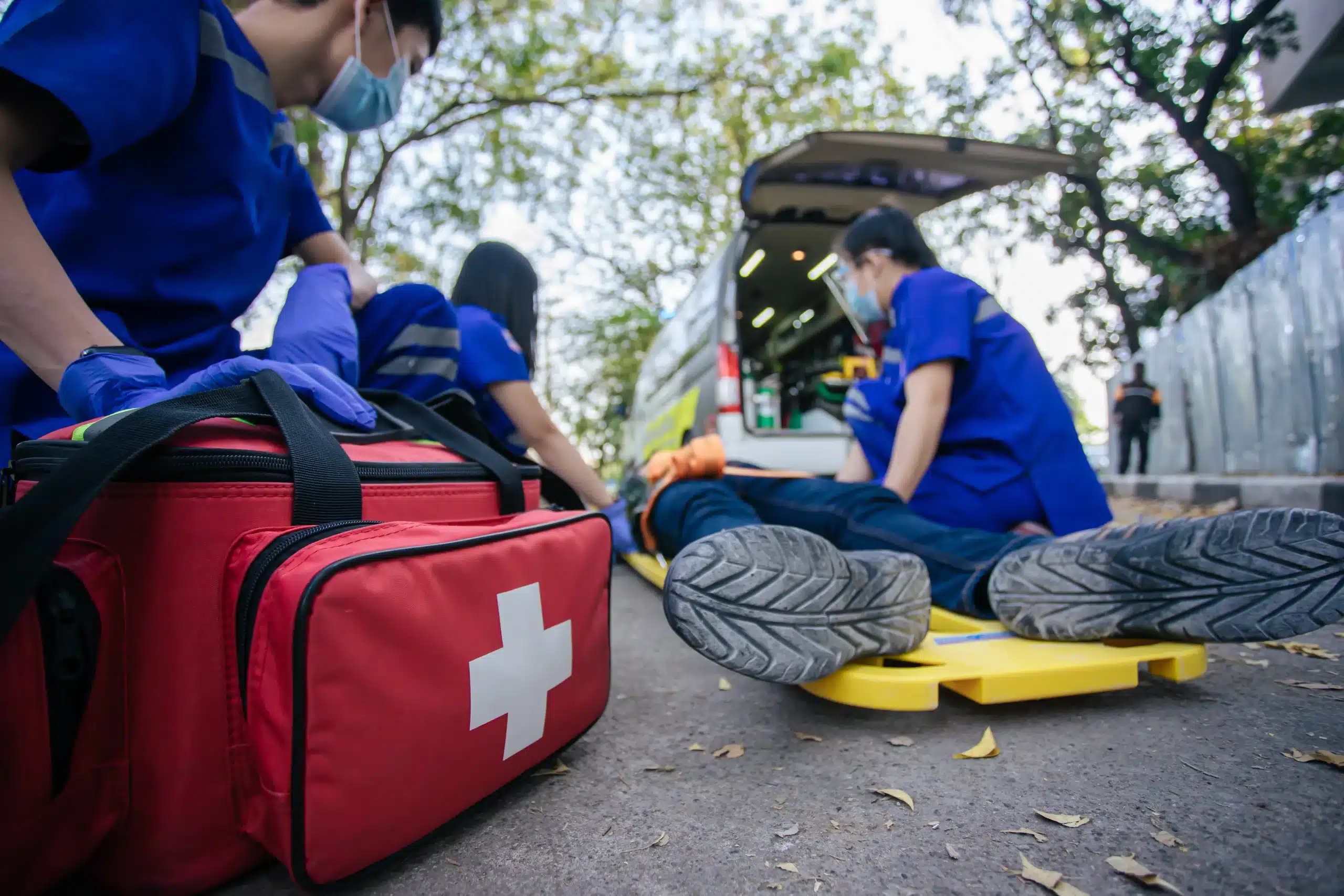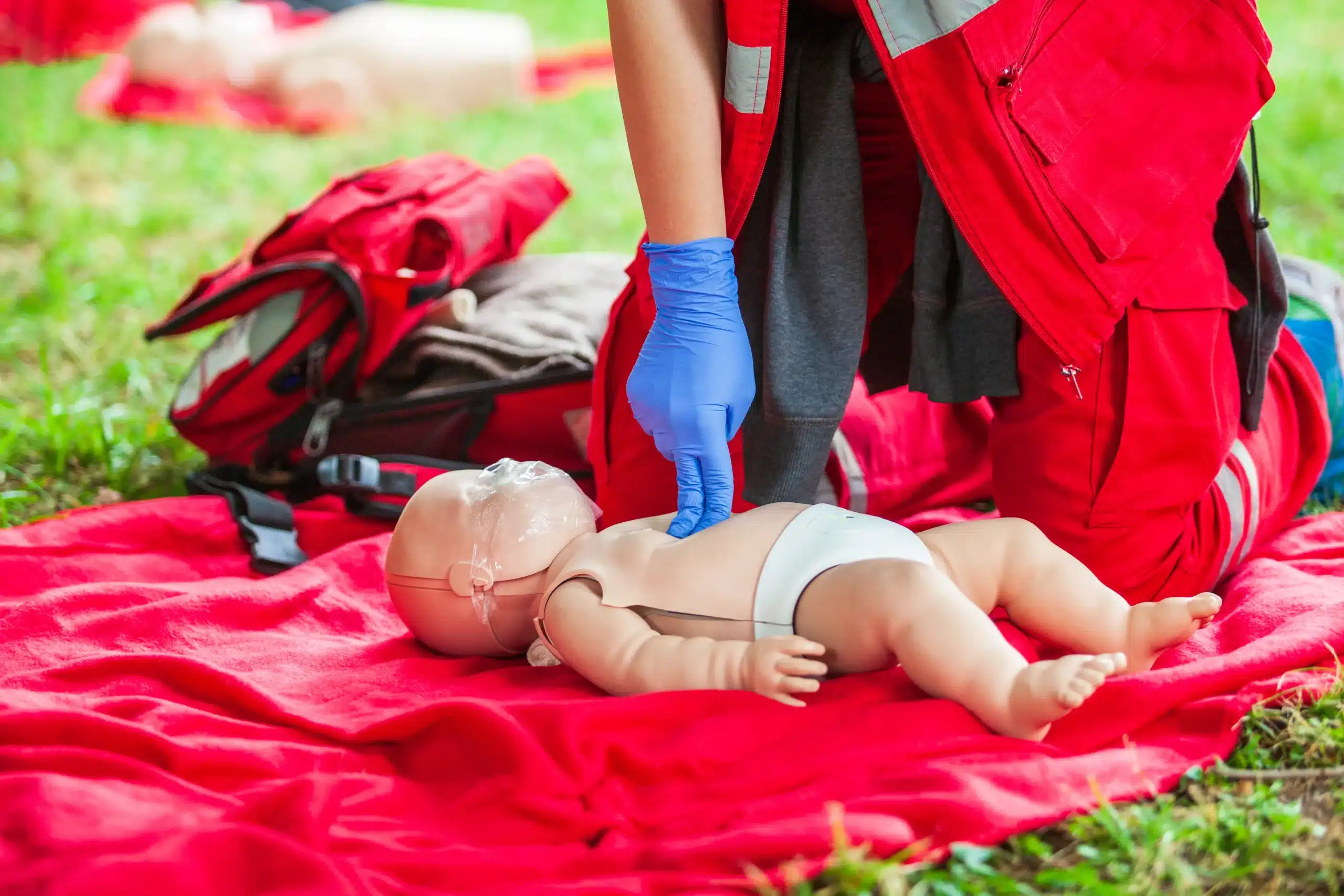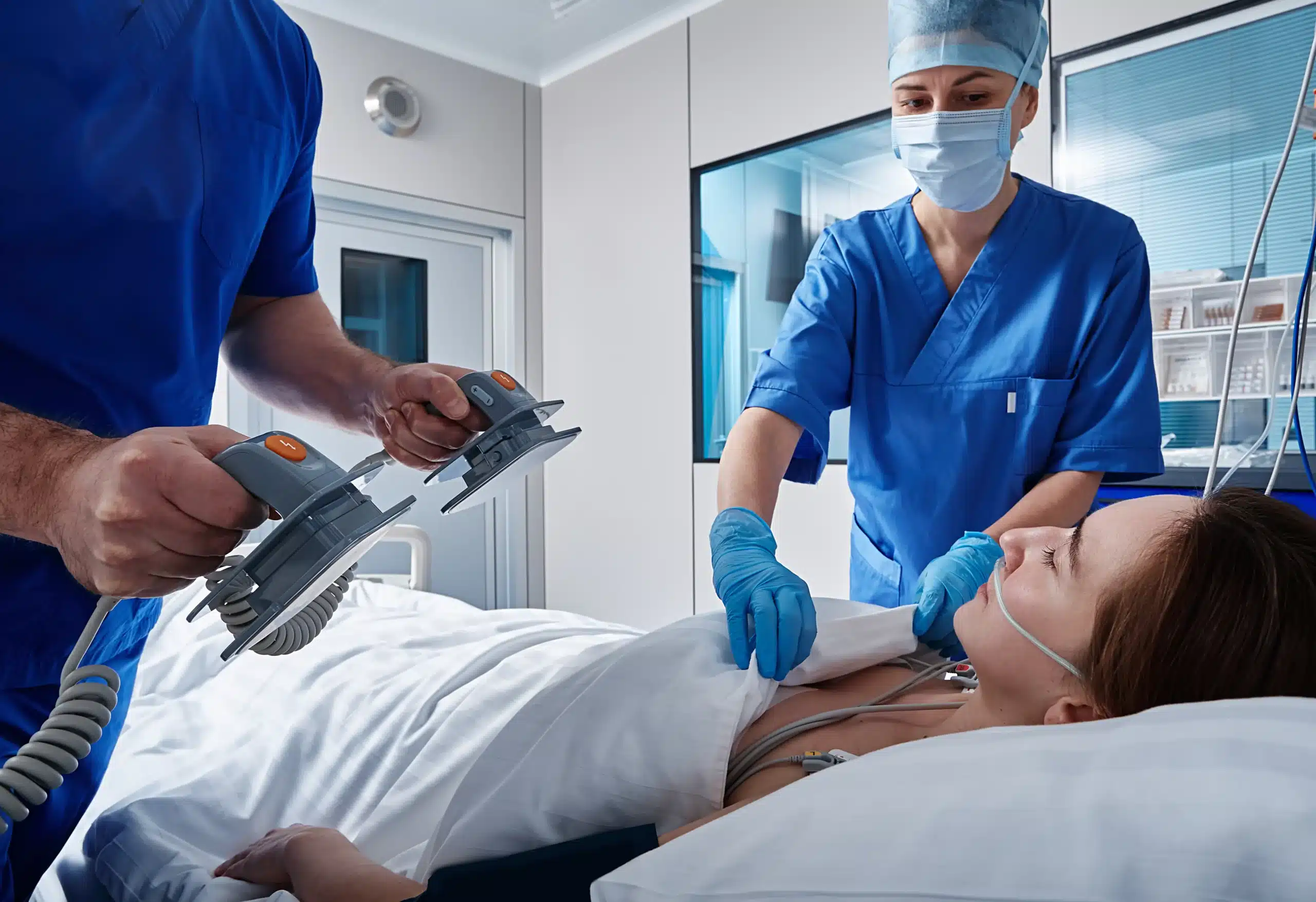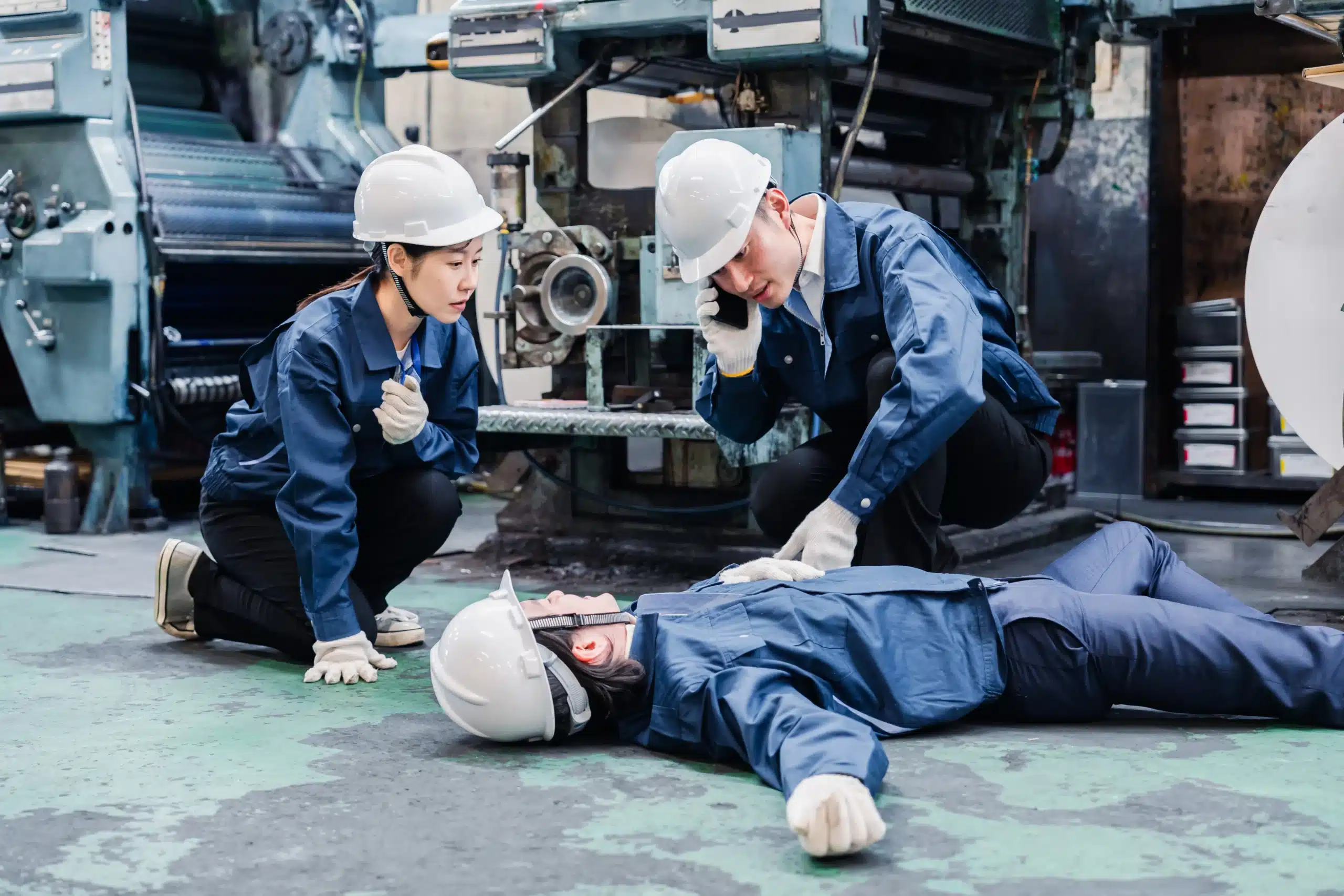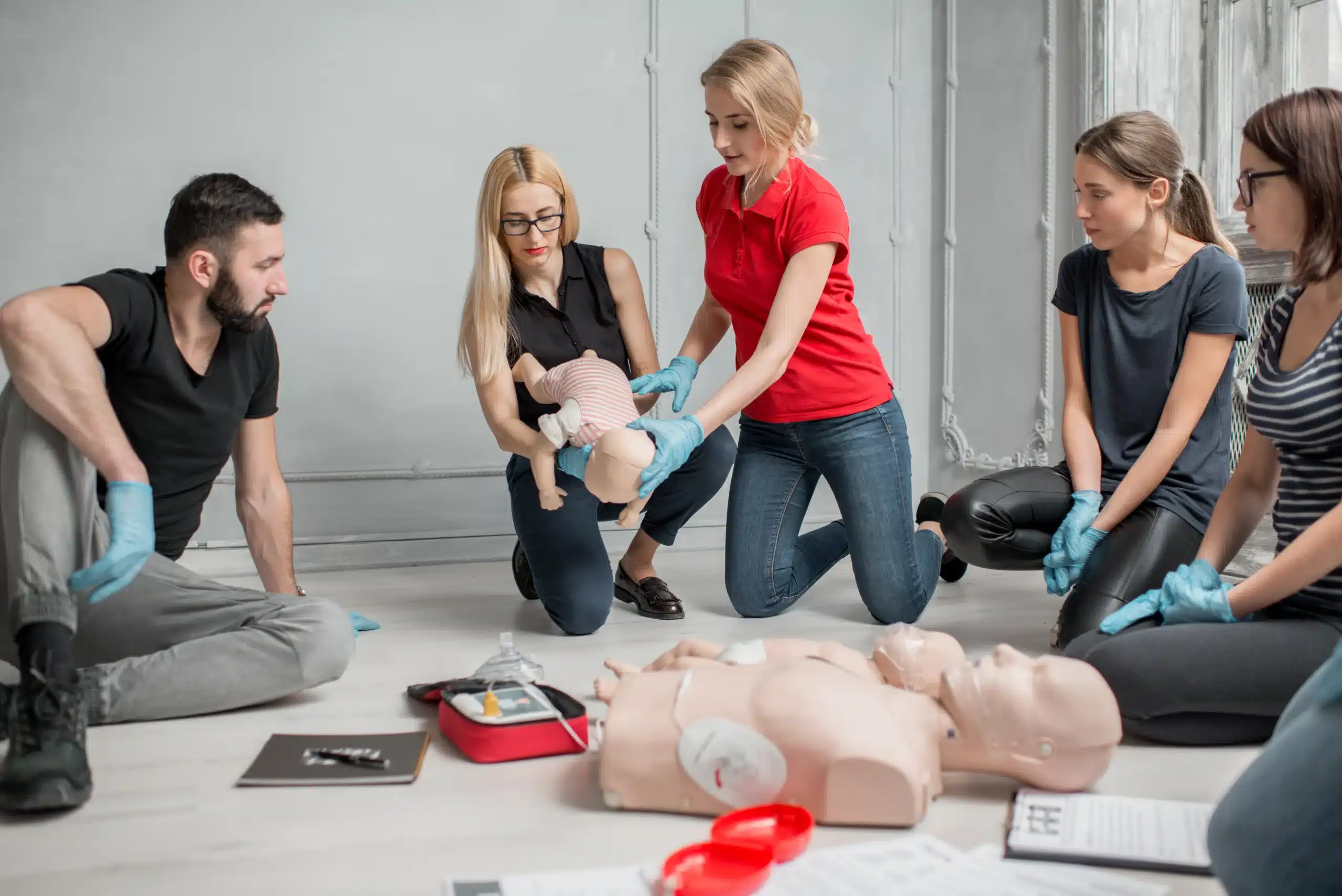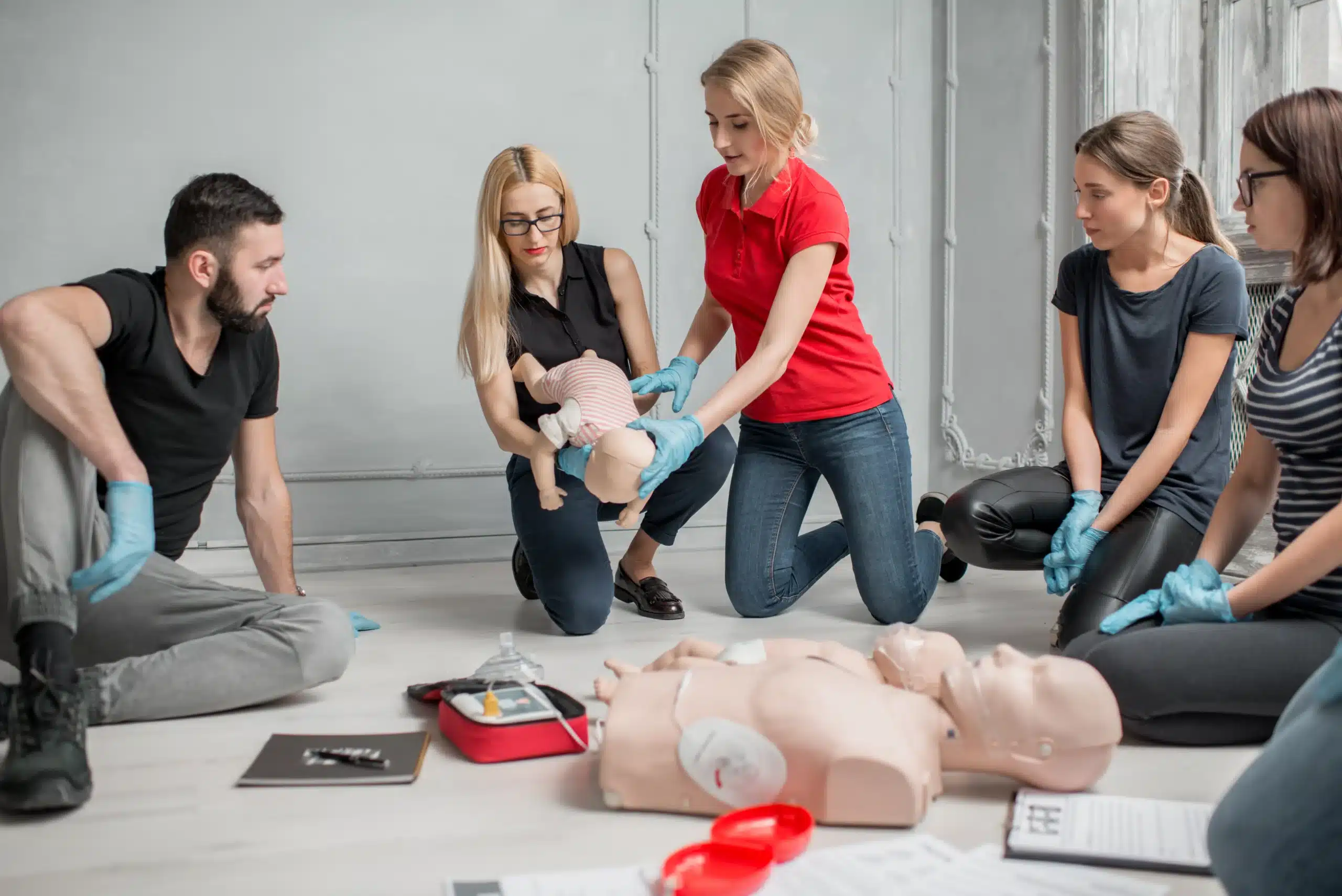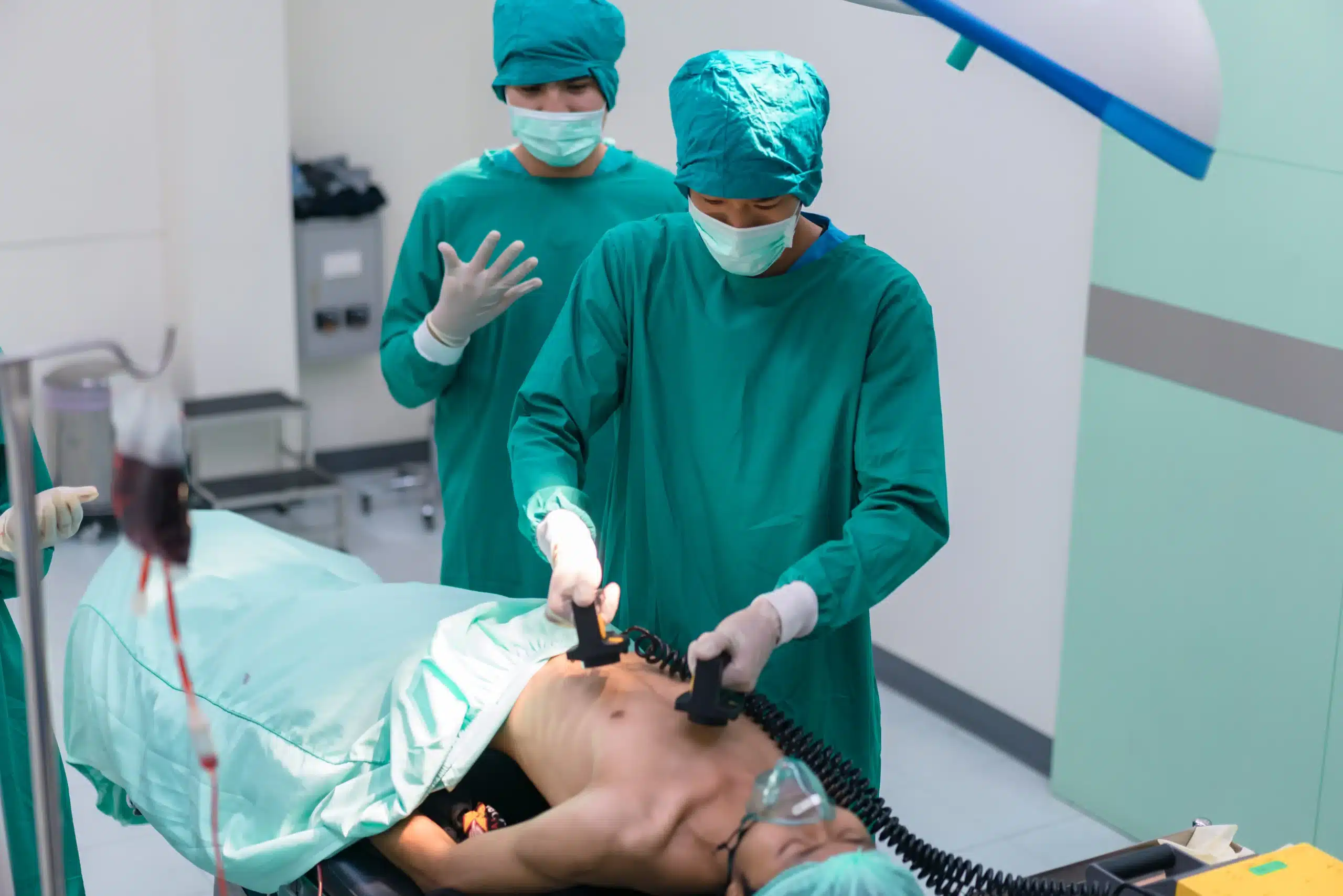Emergencies can happen anytime, anywhere. Would you know what to do? BLS training equips you with the skills to respond effectively to life-threatening situations, providing basic life support until professional help arrives. Whether you’re a healthcare professional, a concerned parent, or simply someone who wants to be prepared, understanding BLS is invaluable. This comprehensive guide covers everything from the core components of BLS training to finding “bls training near me” and choosing the right course format for your needs. We’ll also explore how to maintain your skills and stay up-to-date with the latest guidelines, ensuring you’re always ready to lend a helping hand.
Key Takeaways
- BLS training empowers you to handle emergencies: Learn essential skills like CPR, AED use, and choking relief to confidently respond to life-threatening situations. Explore in-person, online, or hybrid course formats to find the best fit.
- Finding the right BLS course matters: Consider your learning style, schedule, and budget when choosing a program. Prioritize hands-on practice and ensure the course meets your certification requirements. Explore local hospitals, community centers, and specialized training providers.
- Stay sharp with ongoing BLS practice: Regularly refresh your skills through practice, refresher courses, and staying up-to-date with the latest guidelines. Consider mentoring or volunteering to reinforce your knowledge and contribute to your community.
What is BLS Training and Why is it Important?
Basic Life Support (BLS) training gives you the skills to respond to life-threatening emergencies. The focus is on high-quality CPR for adults, children, and infants, along with other essential skills like using an AED and relieving choking. BLS certification shows you’re prepared to help in a crisis and can boost your confidence in emergencies. These skills are invaluable, whether you work in healthcare or simply want to be prepared. BLS training offers lasting benefits, from increased workplace safety to a greater sense of personal preparedness. You can find more information on BLS classes in Milpitas.
What Does BLS Training Cover?
BLS certification training covers core life-saving techniques. You’ll learn how to perform high-quality CPR for all ages, including chest compressions, rescue breaths, and airway management. The training also covers how to use an AED and respond to choking. AHA BLS CPR classes offer comprehensive instruction and hands-on practice to build proficiency.
Who Needs BLS Certification?
Healthcare providers, like doctors and nurses, often require BLS certification. It’s also highly recommended for other professionals working in healthcare, including medical assistants, dentists, and therapists. BLS certification is also valuable for lifeguards, firefighters, teachers, coaches, and childcare providers. Anyone who might need to respond to a breathing or cardiac emergency should consider BLS training.
Common BLS Misconceptions
One misconception is that BLS training is only for medical professionals. Anyone can learn these life-saving skills. Another misconception is that online-only courses offer sufficient training. While online components can be helpful supplements, effective BLS training always includes hands-on practice to develop the muscle memory and practical skills needed to confidently respond in real-life emergencies. Consider taking CPR and first-aid classes to gain in-person training.
Find Top BLS Training Near You
Finding the right BLS training program is easier than you think. Here’s how to find high-quality options near you:
Search Online
Start with a simple online search. Use keywords like “BLS training near me” or “BLS certification [your city].” Many training centers have websites with course details, schedules, and certification options. Reading online reviews and comparing prices can help you narrow down your choices.
Check Local Healthcare Institutions and Community Centers
Hospitals, clinics, and community centers often offer BLS training to both healthcare professionals and the public. Check their websites or give them a call to see what’s available. These local resources can be a convenient and affordable way to get certified. Don’t forget to check with your local YMCA or parks and recreation department, too. They often host a variety of safety courses.
Top BLS Training Providers
Here are a few well-known providers to get you started:
Milpitas CPR Classes and Safety Training Seminars
Milpitas CPR Classes offers a range of American Heart Association (AHA) BLS certification courses. They are a woman-owned AHA Training Center providing other essential courses such as ACLS, PALS, CPR, and First Aid. They primarily serve Milpitas, San Jose, and Santa Clara.
American Heart Association (AHA)
The AHA provides a comprehensive BLS CPR curriculum recognized for its high standards. Completing their course earns you an AHA certification, valid for two years. You can locate AHA-certified training centers through their website.
American Red Cross
The American Red Cross is another reputable organization offering BLS certification and renewal training. Their courses are designed for healthcare providers and first responders, covering essential skills like CPR, First Aid, and AED use.
National Safety Council (NSC)
The NSC offers a variety of training programs, including BLS courses. They focus on giving both healthcare professionals and the general public essential emergency response skills.
Local Hospitals and Medical Centers
Many local hospitals and medical centers offer BLS training. Check with hospitals in your area, like those mentioned by Santa Clara CPR Classes, for their course offerings and schedules. These institutions frequently have programs for their staff and the surrounding community.
Choose the Right BLS Training Format
Finding the right BLS training format is key to successfully learning the life-saving skills you need. Let’s explore the most common options—in-person, online, and hybrid—to help you decide which one best fits your learning style and schedule.
In-Person Classes
In-person BLS certification training offers a hands-on learning experience. You’ll work directly with an instructor and other students, practicing techniques on mannequins and getting immediate feedback. This format is ideal for those who thrive in interactive environments and prefer face-to-face instruction. It also allows for real-time clarification and a deeper understanding of the material. Many local providers offer American Heart Association (AHA) BLS certification courses, which are highly regarded in the healthcare field.
Online Courses
Online BLS courses offer flexibility and convenience. You can learn at your own pace, revisiting modules as needed, and fitting the training around your busy schedule. Online resources are also a great way to stay updated on the latest BLS guidelines. This format is perfect for self-directed learners who prefer independent study and have limited time for in-person classes. However, keep in mind that online courses typically require self-discipline to complete the material and may not offer the same level of hands-on practice as in-person training.
Hybrid Options
Hybrid BLS courses combine the best of both worlds. They typically involve online learning modules coupled with in-person skills sessions. This format offers a balance of flexibility and hands-on practice. Research suggests that hybrid learning can effectively combine the benefits of both in-person and online instruction, leading to strong knowledge acquisition and retention. This approach is a good fit for those who appreciate the convenience of online learning but also value the practical application and feedback provided in a classroom setting.
Factors to Consider
When choosing a BLS training format, consider these factors:
- Learning Style: Do you prefer hands-on, interactive learning, or are you a self-directed learner who thrives in independent study environments?
- Schedule: How much time do you have to dedicate to BLS training? In-person classes have fixed schedules, while online and hybrid options offer more flexibility. Find out how long it takes to get BLS certified to help with your planning.
- Budget: Course costs can vary depending on the format and provider. Explore options that align with your budget.
- Location: If you prefer in-person training, consider the location and accessibility of the training center.
- Practice Opportunities: Regularly practicing your BLS skills is crucial for maintaining proficiency. Consider how each format can facilitate ongoing practice.
- Certification Requirements: Ensure the chosen format meets the certification requirements of your profession or organization.
What to Expect in a BLS Course
So, you’ve decided to get BLS certified—great! Here’s a rundown of what you can expect during your BLS training. Knowing what’s ahead will help you feel prepared and confident.
Course Structure and Duration
BLS certification training covers essential procedures for managing airways and providing basic life support. You’ll learn how to perform CPR, use an AED, and relieve choking. The course typically follows a structured format that combines lectures, demonstrations, and hands-on practice. Expect a blend of interactive learning and practical application. Most BLS courses run for about 3.5 hours, though this can vary slightly depending on the provider.
Hands-On Practice and Assessment
BLS courses emphasize hands-on learning to build your muscle memory and confidence. You’ll practice CPR and other life-saving techniques on mannequins, allowing you to apply what you’ve learned in a simulated environment. Instructors will assess your skills throughout the course to ensure you’re performing them correctly. This usually involves demonstrating your proficiency in CPR, AED use, and other key BLS procedures.
Certification Process and Validity
Upon successful completion of an AHA BLS course, you’ll receive an American Heart Association certification card, valid for two years. This nationally recognized credential demonstrates your competence in BLS. Remember to keep your certification card in a safe place, as you may need to present it as proof of your qualifications.
Costs and Discounts
In Milpitas, BLS certification courses typically cost around $70 for a 3.5-hour class. However, prices can vary based on the training center and any included materials. Some providers offer discounts for groups, students, or returning customers, so it’s always a good idea to inquire about potential cost savings. Check with Milpitas CPR Classes for current pricing and any available discounts.
Renewing Your Certification
Your BLS certification is valid for two years. To maintain your credentials and stay up-to-date on the latest guidelines, you’ll need to take a renewal course before your current certification expires. Safety Training Seminars offers convenient BLS renewal courses to help you stay compliant. Set a reminder a few months before your expiration date to give yourself ample time to recertify.
Make the Most of Your BLS Training
Getting your BLS certification is a rewarding experience, but the real value comes from applying and maintaining those skills. This section covers everything from enrolling in a course to staying up-to-date with the latest guidelines.
Enrollment and Prerequisites
Most BLS courses, like those offered by the American Red Cross, are designed for healthcare providers and public safety professionals. While there aren’t typically formal prerequisites, a basic understanding of medical terminology can be helpful. Check with your chosen provider, such as Milpitas CPR Classes, for specific requirements.
What to Bring
For in-person BLS training, wear comfortable clothing, as you’ll be actively participating in demonstrations and practice scenarios. Bring a notebook and pen to jot down key takeaways and any questions. Remember, upon successful completion, you’ll receive an American Heart Association certification card, valid for two years.
Tips for Mastering BLS Skills
Hands-on practice is essential for mastering BLS skills. Don’t hesitate to ask questions during your training and take advantage of every opportunity to practice. Consider finding a mentor to continue refining your skills after completing your course. Regularly reviewing the material and staying updated on the latest BLS guidelines will also help maintain your proficiency.
Ongoing Learning and Support
BLS is a constantly evolving field, so ongoing learning is crucial. Subscribe to medical journals or follow reputable organizations like the American Heart Association to stay informed about advancements. Online resources and refresher courses can also provide valuable support.
Maintaining Proficiency
Consistent practice is key to maintaining proficiency in BLS. Look for opportunities to refresh your skills through online simulations, refresher courses, or volunteering. Mentoring others is another excellent way to reinforce your knowledge. Maintaining your BLS skills not only benefits you but also ensures you’re prepared to provide assistance when needed.
Related Articles
- BLS Certification in San Jose: Your Complete Guide – Milpitas CPR Classes
- BLS Certification Milpitas: Your Comprehensive Guide – Milpitas CPR Classes
- BLS for Healthcare Providers in Santa Clara: A Guide – Milpitas CPR Classes
- BLS Courses in Santa Clara: Your Complete Guide – Milpitas CPR Classes
- Online BLS Classes in Milpitas: Your Complete Guide – Milpitas CPR Classes
Frequently Asked Questions
Is BLS certification right for me, even if I’m not a healthcare professional? Absolutely! While BLS certification is often a requirement for healthcare providers, anyone can benefit from learning these life-saving skills. Knowing how to respond to emergencies like cardiac arrest or choking can make a real difference in any situation.
What’s the difference between online and in-person BLS training? Online BLS courses offer flexibility, allowing you to learn at your own pace and on your own schedule. In-person classes provide hands-on training with an instructor, giving you immediate feedback and the chance to practice skills in a real-time environment. Hybrid courses combine online learning with in-person skills sessions. The best format for you depends on your learning style and schedule.
How long does BLS certification last, and how do I renew it? BLS certification is typically valid for two years. To renew your certification, you’ll need to take a recertification course before your current certification expires. This ensures your skills are up-to-date and you maintain your qualifications.
How much does BLS training cost, and are there any discounts available? The cost of BLS training varies depending on the provider and the format you choose (in-person, online, or hybrid). Many providers offer discounts for groups, students, or returning customers. It’s always a good idea to contact the training center directly to inquire about pricing and any available discounts.
What can I expect during a BLS course? A typical BLS course covers essential life-saving techniques, including CPR, AED use, and relieving choking. You can expect a combination of lectures, demonstrations, and hands-on practice. The course will also include an assessment to ensure you’ve mastered the necessary skills.
